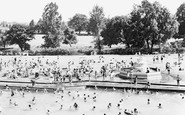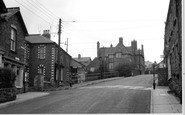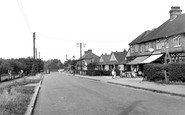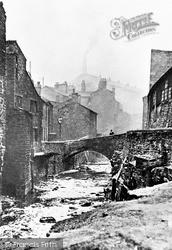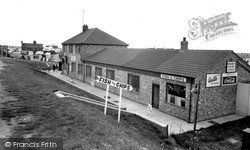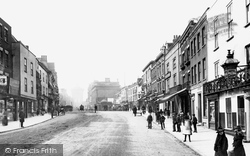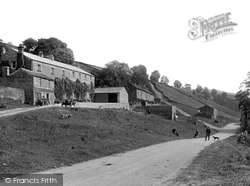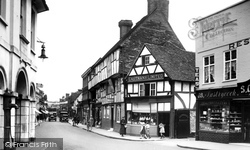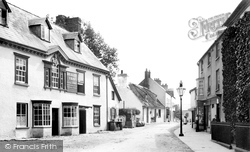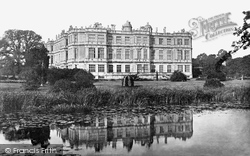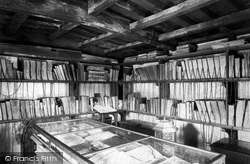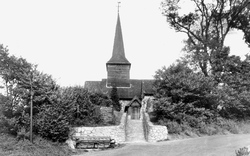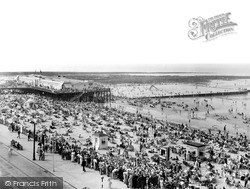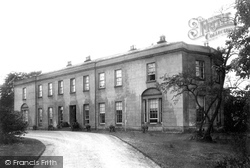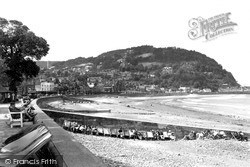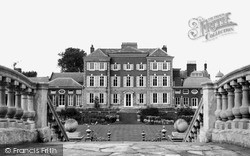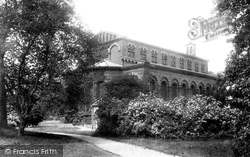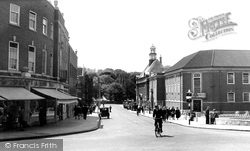Places
4 places found.
Those places high-lighted have photos. All locations may have maps, books and memories.
Photos
Sorry, no photos were found that related to your search.
Maps
11 maps found.
Books
Sorry, no books were found that related to your search.
Memories
227 memories found. Showing results 51 to 60.
That Pool Again
I discovered the swimming pool during a bike ride with a friend and we thought ourselves very daring for cycling through the park even though the park attendants were watching. You didn't have to lock your bike in those days and ...Read more
A memory of Woking in 1963 by
Childhood Years
My name is now Marie Moore but my maiden name was Jeeves. Memories of Cayton Bay 1960s to 70s will stay with me forever, my nannan, mam and her 2 sisters all had their own caravans on Wallis's Holiday Camp, our caravan number ...Read more
A memory of Cayton Bay in 1963 by
Wealdstone High Street 1962
Wealdstone High Street was usually a vibrant place and this photo, taken early on a Sunday morning, with no cars and few people, shows how times change! The shops on the left show Len Evans fruiterer shop, then John ...Read more
A memory of Wealdstone in 1962
Childhood In The Village
I lived in Lycett Road from 1955 to 1981, what a change! Mostly the quietness at night, no cars or buses, no people. The street lights went out at midnight. The building on the right was Woods, something to do with cars, ...Read more
A memory of Wallasey in 1962 by
South Street, 1960's
Living on the outskirts of a large Midland city, and having Welsh parents, a visit to Sebastopol was also exciting and eventful. My grandmother had sold Hill Cottage and bought 21 South Street, which was more manageable, as ...Read more
A memory of Sebastopol in 1962 by
Rats, Rats And More Rats.
This photograph was obviously taken when the road bridge was nearing completion in 1961. My husband grew up nearby, and tells some gruesome stories about the plague of rats they experienced when the undergrowth was being ...Read more
A memory of Saltash in 1961 by
Growing Up In Gilnahirk
My family moved from Leeds, Yorks to Gilnahirk when I was 11 months old - my parents had a house built in Gilnahirk Walk and we moved in when I was two. I and my two sisters had an idyllic childhood, we had so many places ...Read more
A memory of Belfast in 1961 by
Cycle Shop & Steggles
My memories of the small block of shops was the Penny Farthing cycle fixed to the wall outside the cycle shop. That shop had all you needed for your bike and more, like the elastic we needed for our catapaults. Hard to get ...Read more
A memory of Pitsea in 1960 by
The Civic Suite
This photo was probably taken soon after the newly built Civic Suite was officially opened for use as public offices. The town's population was expanding rapidly as the local big industries attracted more and more workers from ...Read more
A memory of Chelmsford in 1960 by
Sister Enid Butlers Orphanage
I was a child that lived at the 'Sister Butler's orphanage' in the early I960s. This message is to anyone that was also at the orphanage at that time, particularly Alison Burbidge, as I have read her account ...Read more
A memory of Hinton Martell in 1960 by
Captions
141 captions found. Showing results 121 to 144.
This was once part of a quiet residential area, with orchards and gardens.
Ingoldmells has had millions of pounds spent on its redevelopment, and more is promised for the future. This makes it difficult to recognise a place like this.
These views show the town from the 1890s to the 1960s; they record both the many changes that have taken place and also, paradoxically, how much of the old town survives.
The Old Gang Mine, one of the oldest workings, is a few miles from here, and would have brought the miners to the warmth of the Punch Bowl Inn, which was built in 1638.
At number 68, on the extreme left, Grimmond's Bakery and teashop is now visible, but Luxford's has become Eastman's the butchers, losing the lovely stained glass decoration from its plain frontage.
Farther along are more barrels and boxes. Outside the lower building next door, now a private residence, is a display of spades.
Ancestral home of the Marquesses of Bath, and sometimes described as the first true Renaissance house in England, Longleat was built by Sir John Thynne between 1547 and 1580.
Since 1958 when the first shops began opening, Basildon town centre has been the home for a whole host of differing consumer needs.
The library was founded after the Rev William Stone left his books to the Minster in 1686 and more were added in 1695.
Since 1958 when the first shops began opening, Basildon town centre has been the home for a whole host of differing consumer needs.
Picturesquely perched on top of its steep knoll and surrounded by a sea of 20th- century housing, the church of St Nicholas, Laindon, possibly dates from the 12th century.
Communal action and a progressive Town Council aided development with the building of promenades, bandstands, concert halls and the provision of a good water supply and drainage.
CHELFORD is better known as a village that is passed through rather than a destination in itself for it stands on an important crossroads, where the route between Manchester and the Midlands crosses
park as something that would attract more visitors.
In 1635 the town archery butts stood at the eastern entrance to Twickenham in Richmond Road - a reminder of the need for a standing army in a constant state of readiness for war abroad.
This amazing independent brick building is staggering by its sheer size, scale and style.
The town, while remaining essentially small and with only a minimal growth in population, continued to spread eastwards. Shaftesbury Avenue was built up in 1904.
The textile mills, forges and foundries, and the vast array of factories of all kinds that sprang up in the 1830s, attracted many people from the surrounding countryside, who exchanged the traditional
This was the harbinger of more to come, for highway considerations dominated town planning after the Second World War. Elsewhere there was much rebuilding.
And fair enough - the road signs to Chelmsford do not shout 'Historic Cathedral City' - they say things like 'County town since 1250', or 'The birthplace of radio'.
The modern city attracts a very different version: 'every day, in every way, it seems to become better, cleaner, prettier, with more attractions, more facilities, more life … It even seems to grow
Places (4)
Photos (0)
Memories (227)
Books (0)
Maps (11)

